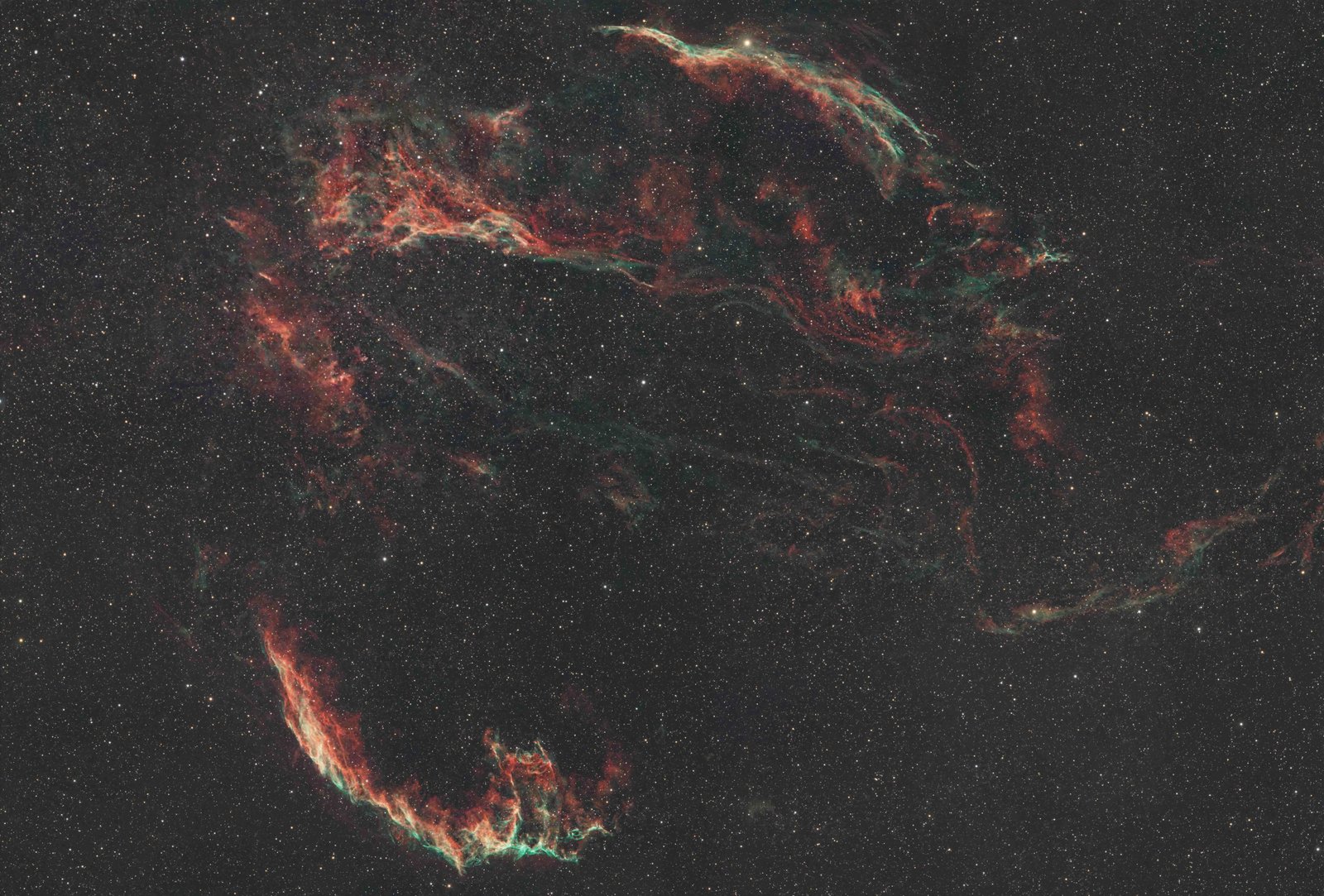Called the Veil Nebula, the debris is one of the best-known supernova remnants, deriving its name from its delicate, draped filamentary structures. The entire nebula is 110 light-years across, covering six full moons on the sky as seen from Earth, and resides about 2,100 light-years away in the constellation Cygnus, the Swan (https://science.nasa.gov/missions/hubble/veil-nebula-supernova-remnant/).
The source supernova was a star 20 times more massive than the Sun which exploded between 10,000 and 20,000 years ago. At the time of the explosion, the supernova would have appeared brighter than Venus in the sky, and would have been visible in the daytime. The remnants have since expanded to cover an area of the sky roughly 3 degrees in diameter (about 6 times the diameter, and 36 times the area, of the full Moon). While previous distance estimates have ranged from 1,200 to 5,800 light-years, a recent determination of 2,400 light-years is based on direct astrometric measurements. (https://en.wikipedia.org/wiki/Veil_Nebula)
I collected data on the Veil Nebula late last week and over the weekend. It is challenging to photograph from Nelson, given how far north it is, with a declination of +32. That meant it was only above the horizon for a few hours and was often down in the murkiness. This image is a 4-panel mosaic collected on a 550mm telescope, because of the large size of the nebula.
of the large size of the nebula.
Leave a Reply